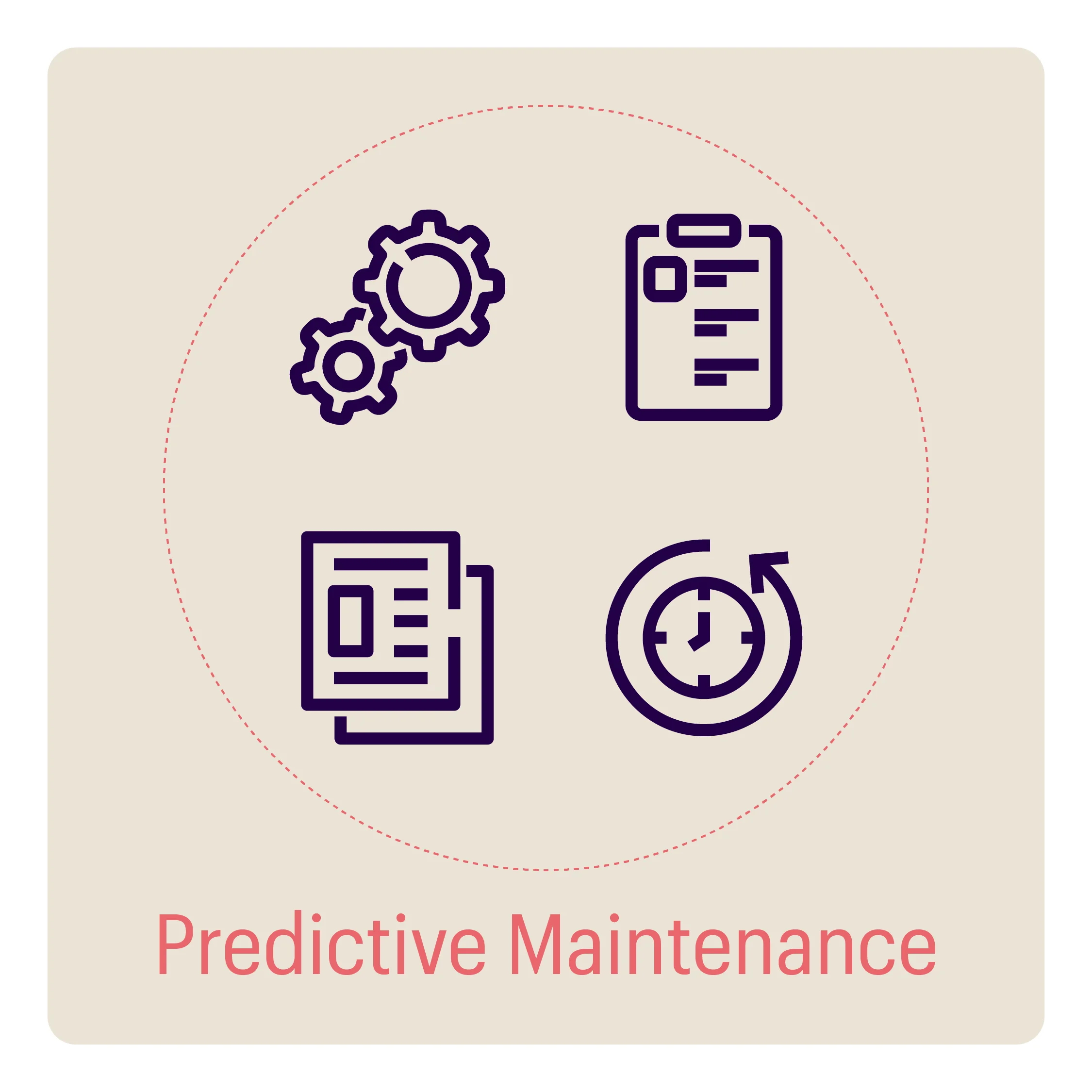In Part 1 of the Predictive Maintenance (PdM) series, we spoke of the various benefits of PdM and explained how advanced IoT-based tech has been integral in effectively obtaining these benefits. Since most maintenance functions today follow a reactive maintenance philosophy, making the leap to PdM, or even a hybrid maintenance model, might seem like a daunting task. This article explains the steps involved in integrating PdM-sensing infrastructure in your manufacturing setup in order to facilitate a world-class maintenance practice.
First, you will need the following elements in place to facilitate IoT-based predictive maintenance:
1. Installing advanced sensors at specific points helps collect equipment data, such as battery health, electricity voltage, operational temperatures, and machine vibrations, in real time.

2. A well-developed data conveyance system is required for data to be transferred from the aforementioned sensors to a centralized data repository. This will typically include on-site field gateways, through which data is filtered and pre-processed, then sent to the cloud for added security and connectivity.

3. Predictive analytics software are iteratively developed ML-based programs that are applied to the data to generate actionable insights regarding equipment performance and condition. This software sends notifications to maintenance teams when machines operate beyond user-defined ranges. It also generates and stores operations reports for future analysis.

When transitioning to a hybrid or fully predictive model of maintenance, framing the problem, scoping the availability of data, and assessing predictions are the three primary factors that will determine success. If your next natural question is about how to begin implementing IoT-based PdM, not just on an as-needed basis but continually and in real time, the following are the first steps to take:
To begin with, instead of starting with an overarching application, you should begin with analyzing all assets to determine which ones will produce the highest ROI in the short run if included in a PdM model. Concentrating on the business KPI element of this framework is important to prevent significant losses from occurring during the initial stages of implementation, which is quite possible given the overhead costs.
- It is natural that historical data about previous usage, performance, and maintenance is required for analysis since the aim is to forecast future failures. Such data should typically go back years in order to fully comprehend the lifecycle of the machinery. Past equipment failures that have occurred should be listed and ranked based on frequency and impact to conduct a pre-implementation analysis. Additionally, general static data of the system, such as its mechanical features, typical usage, and operating circumstances, can offer you useful information to design a predictive maintenance model. The presence of existing sensors on all equipment as well as the predictability of each asset’s failures are two additional factors that must be taken into account here as well.
- All this data – which includes both static data regarding mechanical qualities, typical usage, and operating conditions of the assets, as well as dynamic data – then needs to be gathered in one place. The following inquiries will then be the main area of focus for analysis:
- What is the desired output?
- Is it possible to accomplish this with the data and equipment available at hand?
- Is the required data – particularly that on past failures – available for use?
- Are the failures sudden or gradual?
- Which components of the asset are associated with failures?
- What are the parameters that can be measured to evaluate the health of the asset?
- How accurate and frequent should these evaluations be?
- The data gathered must then be cleaned, stored, transformed, and integrated to gain actionable insights. Advanced integration software is typically used to do this.
- Once this is done, a modeling approach that best matches the data at hand and the desired outcome can then be selected in order to establish a relationship between the input data (manufacturing, usage etc.) and the output data (part failures, service records etc.).
- IoT-based sensors that monitor operating conditions must then be installed and utilized. Using AI- and IoT-based technologies supports the use of existing sensors in the following manners:
- These technologies help supplement sensor data with additional types of data, such as photos, audio, or video, to create advanced datasets for a comprehensive predictive model. An important source of data for PdM models, for instance, is audio data. Sound and vibration can be detected by integrated sensors, which are employed in IoT-based predictive maintenance models.
- To find failure trends over longer time periods, time series data going back years is used. Deep learning networks are capable of learning from lengthy and convoluted sequences; such technologies can, therefore, make more precise predictions about future failures based on time series data, as compared to other forms of technology. Prediction becomes more accurate and optimally enabled when combined with historical data that is stored in publicly available repositories on the internet.
- No matter which maintenance strategy you were using so far, a move towards PdM will require some workflow changes on the scope of the whole maintenance department. Therefore, pilot equipment should be deployed to test and validate the selected PdM model. Trial deployment also helps gauge the ROI from full model deployment.
- Once the pilot run is successful, a cycle of implementation and improvement will need to be put in place as other critical assets are brought on board. Learnings from the early runs must be used to prove the selected PdM program’s value. The framework must be continuously improved upon before begin taking steps to scale.
Conclusion
IoT-enabled PdM has the potential to transform maintenance completely and forever, providing benefits that range from added cost savings to improved worker safety. However, a well-developed architecture with emphasis on ML techniques is required for a robust predictive maintenance system.
The implementation plan for predictive maintenance described above can be summed up as follows:
- Determine the use case before beginning the implementation process. Make sure you can create one or that you currently have one that meets your business needs.
- Use clean, integrated data as well as ML techniques to assess the data set’s degradation or failure patterns.
- Install new sensors and integrate AI- and IoT-based technologies into existing sensors.
- Decide on a predictive maintenance model based on available data and the insights derived.
- Deploy a pilot run of the selected model to gauge the ROI and required workflow changes.
- Establish continuous and long-term improvement methodology.
Predictive maintenance is expected to be in widespread adoption as a result of falling hardware and software prices. In the near future, investing in these technologies, working with analytics professionals, choosing the right software, and identifying assets that need maintenance will provide companies that adopt this model a significant competitive advantage in inevitable digital transformation of the future.